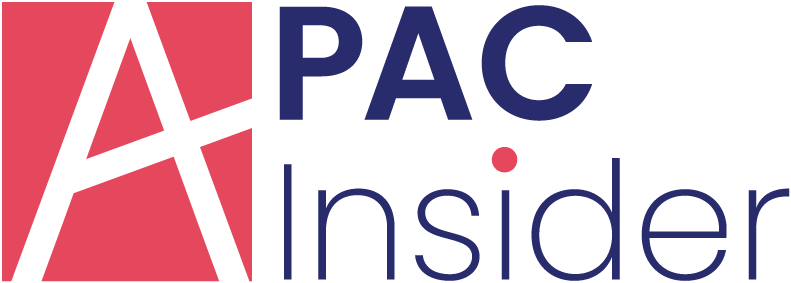Accounting software is no longer a luxury reserved for large corporations—it has become an essential tool for businesses of all sizes to manage finances, reduce manual work, and stay compliant with ever-evolving tax regulations. Whether you're a startup managing invoices or an established company handling payroll and multi-currency reporting, the right software can simplify operations and offer valuable insights. But with so many options on the market, how do you choose?
Let’s explore how to make a smart, future-ready decision when selecting accounting software.
Understand Your Business Needs First
Before diving into software comparisons, start by mapping out your business's specific accounting requirements. Are you mainly concerned with invoicing and expense tracking, or do you need more advanced features like payroll processing, inventory management, or multi-entity consolidation?
For instance, freelancers and small businesses may only need simple bookkeeping tools. On the other hand, growing startups might require software that supports scalable automation, multiple users, and integrations with other tools like CRM, payroll, or tax filing platforms.
Think about:
- The complexity of your transactions
- Number of users and departments involved
- Reporting requirements
- Industry-specific needs (e.g., retail POS, time tracking, donor management for nonprofits)
Choosing software that aligns with your current operations while being flexible enough to accommodate growth is crucial.
Look Beyond Features—Think in Systems
It’s easy to get distracted by bells and whistles, but accounting software should not be viewed in isolation. Your accounting tool will likely need to sync with your existing business stack—HR software, POS systems, tax calculators, ecommerce platforms, and banking APIs.
Lack of integration leads to duplicated data, inconsistent reporting, and increased human error. Before committing, assess whether the software connects seamlessly with your key tools. APIs, plug-ins, and automation features can save hundreds of hours in manual work.
Prioritize Usability and Team Adoption
Software can only deliver value if your team actually uses it. If a platform is clunky, confusing, or requires weeks of training, it may slow down operations instead of streamlining them.
Look for:
- A clean, intuitive interface
- Minimal learning curve
- Helpful documentation and tutorials
- Responsive customer support
Many vendors offer free trials—use them to test drive the interface. Observe how easily your team can navigate through tasks like uploading receipts, generating reports, or setting recurring invoices.
Pay Attention to Security and Compliance
With financial data being among the most sensitive information your company handles, security should be non-negotiable. Look for features like:
- End-to-end data encryption
- Two-factor authentication
- Automatic data backups
- User permission levels and access control
Additionally, ensure the software complies with local tax laws and financial regulations relevant to your region or industry. If you operate internationally, make sure it supports multi-currency transactions and country-specific tax codes.
Value Matters More Than Price
There’s a wide price range in the market—from free open-source tools to enterprise-grade platforms with custom pricing. But the cheapest software isn’t always the most cost-effective.
Instead of focusing solely on price, consider value:
- Does the software reduce time spent on repetitive tasks?
- Does it help avoid tax penalties or missed filings?
- Does it offer insights that help you grow smarter?
Some platforms charge per feature, per user, or based on transaction volume. Make sure you understand the pricing model and whether it fits your usage.
The Importance of Ongoing Support
Even the best software isn’t immune to glitches. What matters is how responsive and helpful the vendor is when something goes wrong.
Check whether support is offered through email, phone, live chat, or community forums. Is it available 24/7? Is there a service-level agreement (SLA) in place? Reading online reviews or checking software comparison platforms can give you a good sense of how a provider treats its customers.
Don’t underestimate the peace of mind that comes from knowing expert help is just a call away.
Cloud vs On-Premise: What Works Best?
Most modern accounting platforms are cloud-based, meaning you can access them from any device with an internet connection. This is ideal for remote work, multi-location teams, and real-time collaboration with accountants or consultants.
On-premise software, while still relevant for some highly regulated industries, often requires IT infrastructure, maintenance, and regular manual updates. For most businesses today, cloud solutions offer greater flexibility, lower upfront costs, and automatic updates.
Example in Practice: EasyBiz in Luxembourg
To illustrate how accounting software can adapt to local and business-specific needs, consider EasyBiz, a Luxembourg-based solution tailored for entrepreneurs and growing SMEs. It combines automated invoicing, tax and VAT management, and real-time reporting in one platform. What sets EasyBiz apart is its scalability—it adjusts to company size and turnover—making it a popular choice for businesses looking to outsource their accounting while maintaining control and transparency. Whether you're starting out or already expanding, such tools allow business owners to focus on growth rather than spreadsheets.
Key Considerations Checklist
Here’s a quick overview of what to keep in mind:
- Scalability for future growth
- Integration with existing tools
- User-friendliness for your team
- Strong data security and backups
- Compliance with tax and legal standards
- Transparent pricing structure
- Accessible and effective support
- Cloud accessibility for remote work
Conclusion: Make an Informed, Long-Term Choice
Choosing accounting software isn’t just a box to check—it’s a foundational decision that will affect how your business tracks success, plans strategy, and stays compliant.
Take your time to research, demo multiple options, and involve your team in the decision-making process. When you find a platform that balances usability, security, scalability, and support, you’ll gain not just a tool, but a powerful partner in your business journey.























